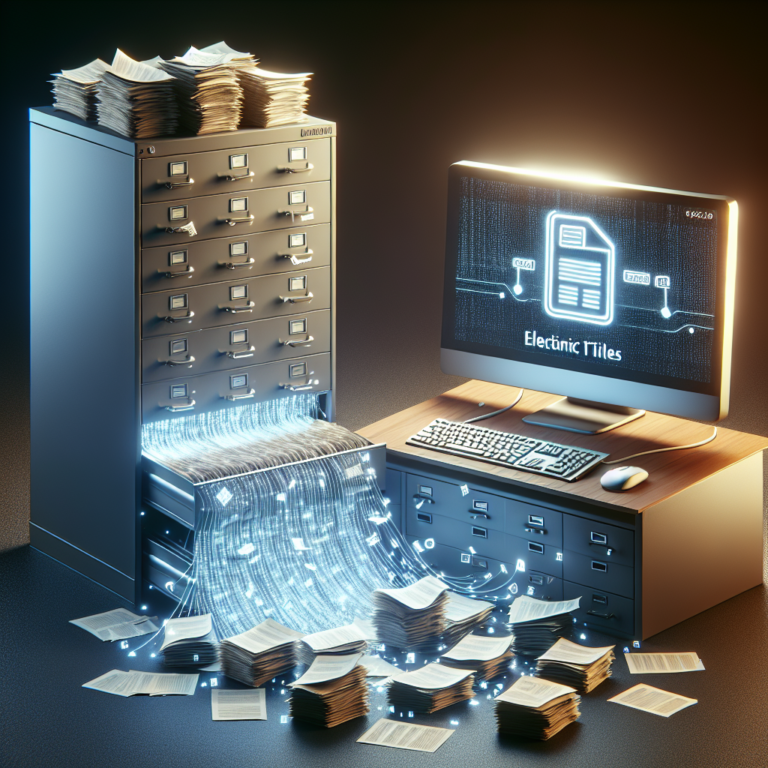In an era where digital transactions reign supreme, industries worldwide are grappling with the necessity for modern solutions to streamline operations. One notable innovation is the emergence of electronic lien titles (ELTs), which have the potential to resolve many of the inefficiencies associated with traditional paper-based systems in vehicle financing and ownership documentation. But are ELTs the solution we’ve been waiting for to modernize our outdated paper systems? Let’s explore.
The Historical Context of Lien Titles
A lien is a legal right or interest that a lender has in a borrower’s asset, typically a vehicle, until the loan obligation is satisfied. In many states, lien titles have historically been documented on paper. This reliance on physical documents is fraught with challenges, including issues of storage, transfer, and potential for loss or damage. Paper systems are cumbersome; they can lead to delays in processing transactions, increased risk of fraud, and ultimately, higher operational costs for lenders and borrowers alike.
Transition to Electronic Systems
With the rise of digital solutions, many states have begun adopting ELTs as a means to modernize the lien title process. An electronic lien title replaces traditional paper records with a digital format that can be easily accessed and managed by various stakeholders, including lenders, borrowers, and state motor vehicle agencies.
Benefits of Electronic Lien Titles
-
Efficiency and Speed: One of the most significant advantages of ELTs is the speed at which transactions can be processed. Electronic submissions mean that lien filings can occur instantly, eliminating the cumbersome back-and-forth associated with mailing or faxing paper documents.
-
Enhanced Security: Digital records are inherently more secure than paper documents. ELTs can be encrypted and backed-up, which reduces the chances of loss, theft, or damage. This makes them a safer option for both lenders and borrowers.
-
Cost Reduction: Transitioning to an electronic system can lead to significant cost savings. Both institutions and consumers incur expenses related to printing, postage, and storage of paper documents. ELTs reduce these costs by minimizing the need for physical products and storage space.
-
Improved Transparency and Tracking: ELTs create a more transparent system where all transactions are tracked in real-time. Lenders can immediately see when a lien has been satisfied, and borrowers have constant access to their lien status without needing to sift through piles of paperwork.
- Environmentally Friendly: In line with global sustainability goals, the move to electronic systems contributes to reducing paper waste. By adopting ELTs, the automotive financing industry can significantly lower its carbon footprint.
Challenges and Considerations
While the advantages of ELTs are compelling, there are also challenges that need to be addressed. The transition from a paper-based system to a digital one can be complex. Some of the main hurdles include:
-
Regulatory Framework: The adoption of ELTs requires changes to state laws and regulations governing lien titling. While some states have already made significant strides, others are still lagging, creating a patchwork of compliance across the country.
-
Technology Infrastructure: Implementing an electronic system requires investment in technology and training. Smaller lenders, in particular, may struggle with the costs associated with upgrading their systems.
- Interoperability: For an ELT system to be fully effective, it must facilitate smooth communication and data sharing between different entities, including banks, dealerships, and state agencies. Developing standardized protocols will be essential for widespread adoption.
Conclusion
As we delve deeper into the digital age, the need for efficient, secure, and timely processes becomes increasingly evident. Electronic lien titles emerge as a beacon of modernization in the outdated world of paper systems. While challenges remain, the benefits of adopting ELTs can pave the way for improved operations in vehicle financing and ownership documentation. The ongoing evolution of technology and regulatory frameworks will likely dictate the pace at which states and institutions embrace this change. However, the shift toward an electronic system appears inevitable, and the automotive finance industry must prepare for this future. Embracing ELTs could well be the key to moving forward into a more efficient, transparent, and secure way of managing lien titles.


